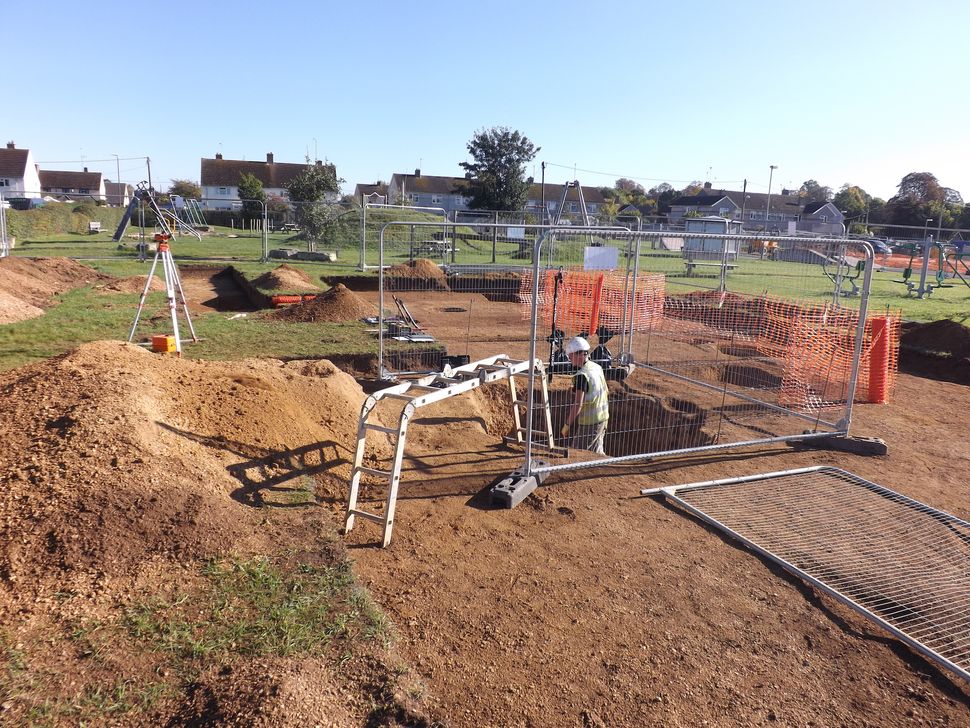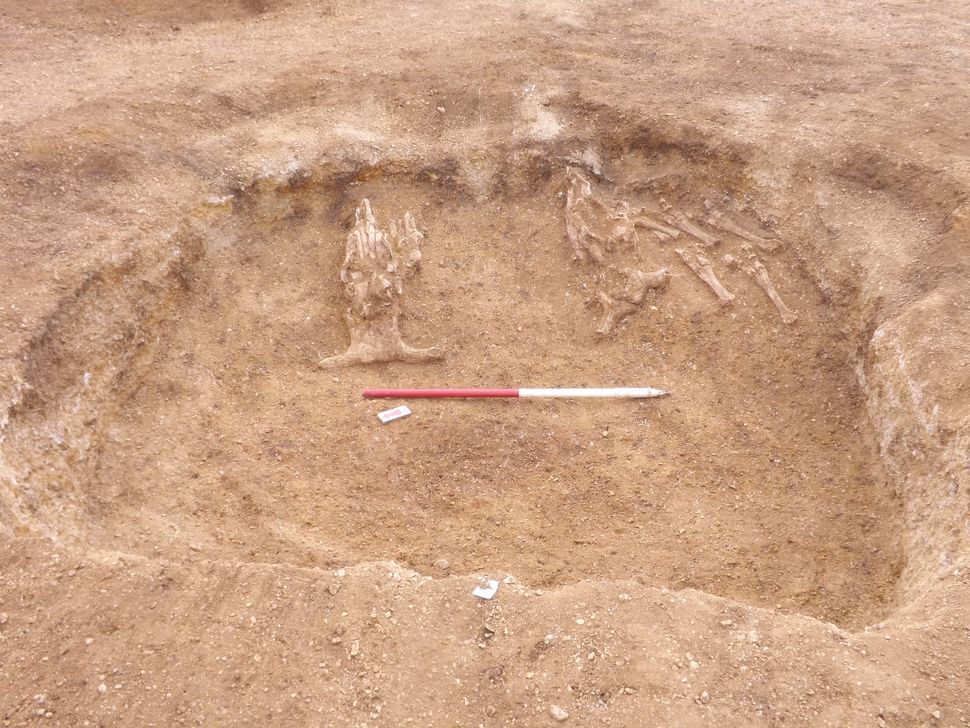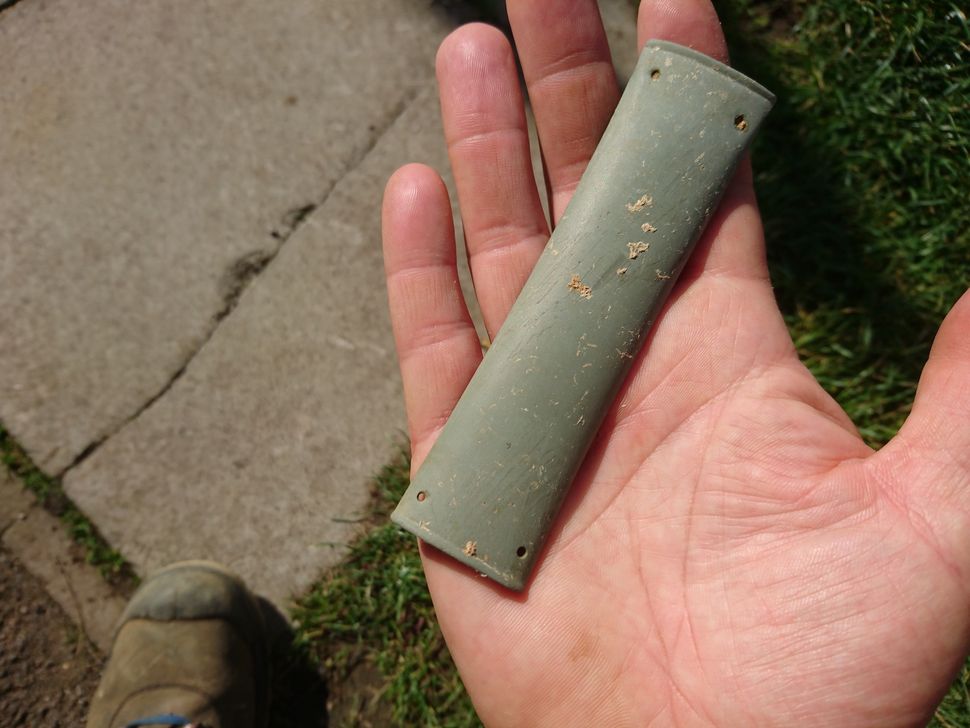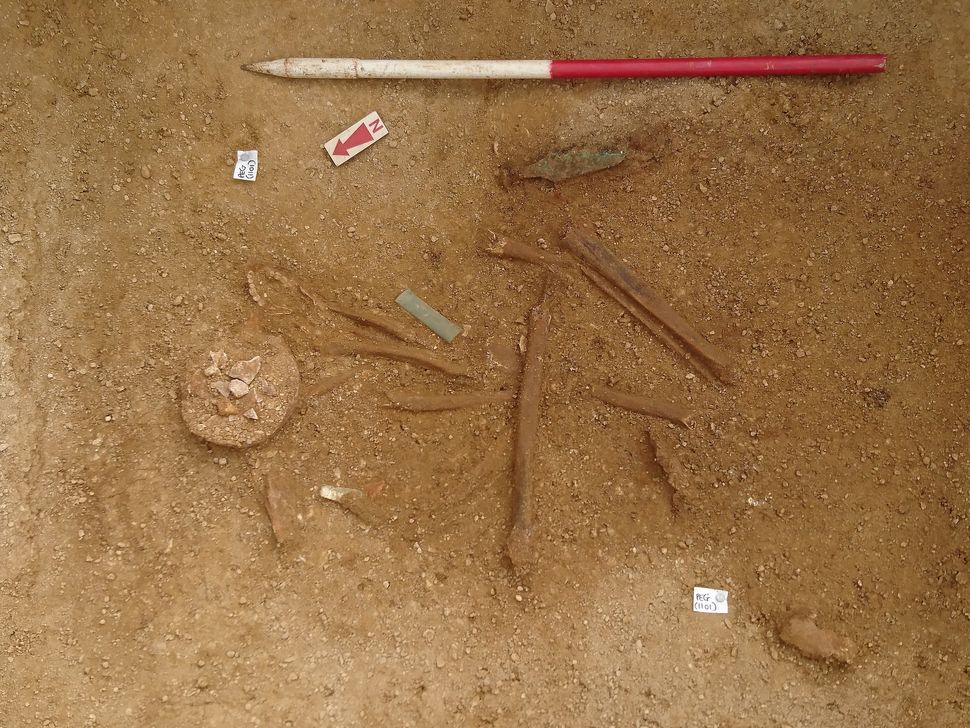Post by Admin on Nov 12, 2019 23:50:59 GMT
Small stone chambers with no access and single or double inhumations are diagnostic for the early megalithic stage in the fifth millennium cal BC. In the last third of the fifth millennium, the earliest chambers with access are attested as dolmens and passage graves (Fig. 4). These graves could be reopened for repeated burials, and this marks the beginning of a new practice for the whole of Europe: the construction of graves for successive depositions of human remains over centuries. The earliest known accessible megalithic grave with reliable radiocarbon dates is located in central western France in the necropolis of Prissé-la-Charrière, Deux-Sèvres. The beginning of burial activities at this dolmen is calculated at 4371 cal BC to 4263 cal BC (95.4%; 4358 cal BC to 4275 cal BC, 68.2%) (Dataset S3, M20-2). Structures transitional to passage graves are documented for Brittany and for the long tumulus or tertre of Lannec er Gadouer with a radiocarbon sequence which pinpoint this transition to 4503 cal BC to 4103 cal BC (95.4%; 4432 cal BC to 4233 cal BC, 68.2%) (Dataset S3, M5-8). Contemporaneous accessible megalithic graves are known from northern Corsica on the Monte Revincu dated at 4327 cal BC to 4266 cal BC (95.4%; 4302 cal BC to 4273 cal BC, 68.2%) (Dataset S3, M27-5).

Fig. 4.
Map showing dates estimated for the start of accessible megaliths as dolmens and passage graves in the different European regions, with 95% probability (68% probability in brackets). Italic bold type is used for date ranges of the posterior density estimates based on samples from accessible megalithic graves, regular bold type is used for simple calibrated radiocarbon dates from accessible megalithic graves, and regular italic type is used for the probabilities of the posterior density estimates associated with the earliest cultural material in dolmen or passage graves.
On the western Iberian Peninsula, date ranges for the onset of accessible structures are calculated for the Estremadura at 3844 cal BC to 3383 cal BC (95.4%; 3658 cal BC to 3432 cal BC, 68.2%) (Dataset S3, M33-1), for the Alentejo at 3743 cal BC to 3521 cal BC (95.4%; 3673 cal BC to 3567 cal BC, 68.2%) (Dataset S3, M34-5), and for Beira at 3883 cal BC to 3782 cal BC (95.4%; 3837 cal BC to 3796 cal BC, 68.2%) (Dataset S3, M35-19). Similarly, the earliest megaliths with entrance in Britain and Ireland are also calculated to the first half of the fourth millennium cal BC. The earliest known megalithic grave in southeast England, Coldrum, is calculated at 3971 cal BC to 3805 cal BC (95.4%; 3960 cal BC to 3880 cal BC, 68.2%) (20), and Parknabinnia on the Burren in Ireland at 3885 cal BC to 3440 cal BC (95%; 3715 cal BC to 3530 cal BC, 68%) (21).
The subsequent centuries are a time of megalithic stasis and reuse of ancient megalithic graves. With the exception of the gallery graves in Belgium, there is no evidence for movements or new megalithic regions added at this time.
Finally, an even later megalithic expansion occurred in the second half of the fourth millennium in northern Germany and southern Scandinavia (22⇓–24). In the Mediterranean, there is a megalithic revival in the second millennium cal BC in the Balearic Islands, Apulia, and Sicily. These are associated with the Bronze Age and/or with the Bell Beaker phenomena (25).

Fig. 5.
Map showing the hypothetical route of the megalithic expansion in three main phases (red−green−yellow), periods of megalithic stasis (brown−white), and episode of a megalithic Mediterranean revival (orange) in the second millennium cal BC, with the estimated start of megalithic graves in the different European regions at 95% probability (68% probability in brackets).
Discussion
The radiocarbon results suggest that megalithic graves emerged within a time interval of 200 y to 300 y in the second half of the fifth millennium cal BC in northwest France, the Mediterranean, and the Atlantic coast of the Iberian Peninsula. Northwest France is, so far, the only megalithic region in Europe which exhibits a premegalithic monumental sequence and transitional structures to the megaliths, suggesting northern France as the region of origin for the megalithic phenomenon. For the remaining regions with an early megalithic proliferation in the fifth millennium cal BC (such as Catalonia, southern France, Corsica, Sardinia, and probably the western Iberian Peninsula and Italian mainland), megaliths are found occurring in small clusters. These are exceptional grave forms for this period in their respective regions, at a time when subterranean cists, pit burials and hypogea (dug-out subterranean burial chambers) were still the most common burial rites. A fresh expansion occurred during the first half of the fourth millennium cal BC when thousands of passage graves were built along the Atlantic coast of the Iberian Peninsula, Ireland, England, Scotland, and France. Their distribution emphasizes the maritime linkage of these societies and a diffusion of the passage grave tradition along the seaway. The passage graves mark a radical change of burial rites, along with other economic and social changes in Europe. In the second half of the fourth millennium cal BC, the passage grave tradition finally reaches Scandinavia and the Funnel Beaker areas. Again, there is evidence for the spread of megalithic architecture along the seaway. The first known passage graves in Scandinavia were built on the western coasts of the Swedish Islands Oland and Gotland, which are both situated in the Baltic (23).
We have thus been able to demonstrate that the earliest megaliths originated in northwest France and spread along the sea routes of the Mediterranean and Atlantic coasts in three successive principal phases (Fig. 5). Their expansion coincided with other social and economic changes of Neolithic and Copper Age societies beyond the scope of this article. The older generation of archaeologists were correct concerning a maritime diffusion of the megalithic concept. They were wrong regarding the region of origin and the direction of the megalithic diffusion. The megalithic movements must have been powerful to spread with such rapidity at the different phases, and the maritime skills, knowledge, and technology of these societies must have been much more developed than hitherto presumed. This prompts a radical reassessment of the megalithic horizons and invites the opening of a new scientific debate regarding the maritime mobility and organization of Neolithic societies, the nature of these interactions through time, and the rise of seafaring.
PNAS February 26, 2019 116 (9) 3460-3465; first published February 11, 2019

Fig. 4.
Map showing dates estimated for the start of accessible megaliths as dolmens and passage graves in the different European regions, with 95% probability (68% probability in brackets). Italic bold type is used for date ranges of the posterior density estimates based on samples from accessible megalithic graves, regular bold type is used for simple calibrated radiocarbon dates from accessible megalithic graves, and regular italic type is used for the probabilities of the posterior density estimates associated with the earliest cultural material in dolmen or passage graves.
On the western Iberian Peninsula, date ranges for the onset of accessible structures are calculated for the Estremadura at 3844 cal BC to 3383 cal BC (95.4%; 3658 cal BC to 3432 cal BC, 68.2%) (Dataset S3, M33-1), for the Alentejo at 3743 cal BC to 3521 cal BC (95.4%; 3673 cal BC to 3567 cal BC, 68.2%) (Dataset S3, M34-5), and for Beira at 3883 cal BC to 3782 cal BC (95.4%; 3837 cal BC to 3796 cal BC, 68.2%) (Dataset S3, M35-19). Similarly, the earliest megaliths with entrance in Britain and Ireland are also calculated to the first half of the fourth millennium cal BC. The earliest known megalithic grave in southeast England, Coldrum, is calculated at 3971 cal BC to 3805 cal BC (95.4%; 3960 cal BC to 3880 cal BC, 68.2%) (20), and Parknabinnia on the Burren in Ireland at 3885 cal BC to 3440 cal BC (95%; 3715 cal BC to 3530 cal BC, 68%) (21).
The subsequent centuries are a time of megalithic stasis and reuse of ancient megalithic graves. With the exception of the gallery graves in Belgium, there is no evidence for movements or new megalithic regions added at this time.
Finally, an even later megalithic expansion occurred in the second half of the fourth millennium in northern Germany and southern Scandinavia (22⇓–24). In the Mediterranean, there is a megalithic revival in the second millennium cal BC in the Balearic Islands, Apulia, and Sicily. These are associated with the Bronze Age and/or with the Bell Beaker phenomena (25).

Fig. 5.
Map showing the hypothetical route of the megalithic expansion in three main phases (red−green−yellow), periods of megalithic stasis (brown−white), and episode of a megalithic Mediterranean revival (orange) in the second millennium cal BC, with the estimated start of megalithic graves in the different European regions at 95% probability (68% probability in brackets).
Discussion
The radiocarbon results suggest that megalithic graves emerged within a time interval of 200 y to 300 y in the second half of the fifth millennium cal BC in northwest France, the Mediterranean, and the Atlantic coast of the Iberian Peninsula. Northwest France is, so far, the only megalithic region in Europe which exhibits a premegalithic monumental sequence and transitional structures to the megaliths, suggesting northern France as the region of origin for the megalithic phenomenon. For the remaining regions with an early megalithic proliferation in the fifth millennium cal BC (such as Catalonia, southern France, Corsica, Sardinia, and probably the western Iberian Peninsula and Italian mainland), megaliths are found occurring in small clusters. These are exceptional grave forms for this period in their respective regions, at a time when subterranean cists, pit burials and hypogea (dug-out subterranean burial chambers) were still the most common burial rites. A fresh expansion occurred during the first half of the fourth millennium cal BC when thousands of passage graves were built along the Atlantic coast of the Iberian Peninsula, Ireland, England, Scotland, and France. Their distribution emphasizes the maritime linkage of these societies and a diffusion of the passage grave tradition along the seaway. The passage graves mark a radical change of burial rites, along with other economic and social changes in Europe. In the second half of the fourth millennium cal BC, the passage grave tradition finally reaches Scandinavia and the Funnel Beaker areas. Again, there is evidence for the spread of megalithic architecture along the seaway. The first known passage graves in Scandinavia were built on the western coasts of the Swedish Islands Oland and Gotland, which are both situated in the Baltic (23).
We have thus been able to demonstrate that the earliest megaliths originated in northwest France and spread along the sea routes of the Mediterranean and Atlantic coasts in three successive principal phases (Fig. 5). Their expansion coincided with other social and economic changes of Neolithic and Copper Age societies beyond the scope of this article. The older generation of archaeologists were correct concerning a maritime diffusion of the megalithic concept. They were wrong regarding the region of origin and the direction of the megalithic diffusion. The megalithic movements must have been powerful to spread with such rapidity at the different phases, and the maritime skills, knowledge, and technology of these societies must have been much more developed than hitherto presumed. This prompts a radical reassessment of the megalithic horizons and invites the opening of a new scientific debate regarding the maritime mobility and organization of Neolithic societies, the nature of these interactions through time, and the rise of seafaring.
PNAS February 26, 2019 116 (9) 3460-3465; first published February 11, 2019




